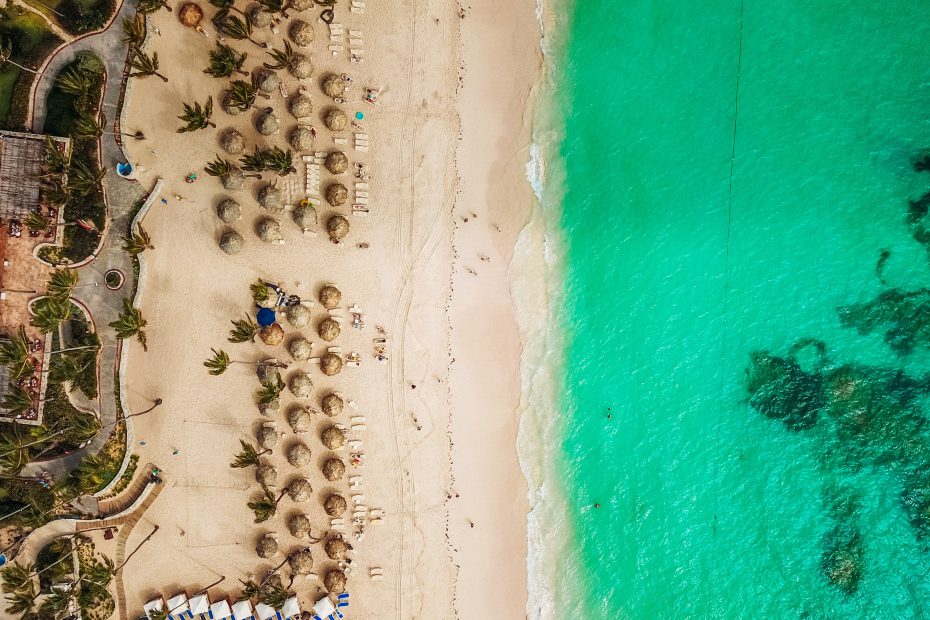Table of Contents
Introduction
The Dominican Republic is a Caribbean nation known for its stunning beaches, but that’s only the beginning of its natural splendor. Beyond the postcard-perfect shores, the Dominican Republic features towering mountains, refreshing waterfalls, serene lakes, fascinating caves, and unique flora and fauna. For outdoor enthusiasts and nature lovers, the Dominican Republic offers boundless opportunities to explore breathtaking landscapes and ecosystems.
Beaches
With over 1,000 miles of coastline, the Dominican Republic unsurprisingly has some of the best beaches in the Caribbean. Here are some top beach destinations to consider:
Punta Cana
Punta Cana, located on the eastern tip of the Dominican Republic, boasts white sand beaches lined with swaying palm trees. The warm, turquoise waters make it ideal for swimming, snorkeling, or relaxing in the sun. Major resorts dot the coastline here.
Puerto Plata
The beaches around Puerto Plata attract sunbathers to their golden sands and perfect Caribbean waters. Playa Dorada and Costa Dorada are two of the most popular. Snorkelers and divers can explore seaside reefs.
La Romana
Home to the famous Casa de Campo resort, La Romana also features great beaches like Bayahibe, Dominicus, and Caleton. The shallow, calm waters make them excellent for families.
Mountains
Inland from the beaches, rugged mountains span across the heart of the Dominican Republic. The mile-high Cordillera Central range runs west to east through the country.
Pico Duarte
Pico Duarte, reaching 10,164 feet in elevation, is the highest peak in the Caribbean. Hiking to the summit provides stunning vistas. The climb takes two or three days, with overnight stays in mountain shelters.
Valle Nuevo
Valle Nuevo is an alpine forest region perfect for hiking, birdwatching, and exploring pine forests and icy streams.
Waterfalls
Waterfalls of all shapes and sizes dazzle visitors throughout the lush interior of the Dominican Republic. Some top waterfalls to visit include:
Salto El Limon
Salto El Limon in the Sierra Baoruco National Park plunges nearly 820 feet, making it the tallest waterfall in the Caribbean.
Cascada Los Tablones
Cascada Los Tablones near Jarabacoa tumbles gracefully down multiple stepped ledges of rock.
Salto Jimenoa
Salto Jimenoa in the Central Cordillera is another marvelous waterfall flowing down from mountain cliffs.
Lakes
From saltwater lagoons to crater lakes, the Dominican Republic has enchanting lakes to admire.
Lake Enriquillo
Lake Enriquillo is a saltwater lake located below sea level, making it the lowest point in the Caribbean region. Flamingoes, iguanas, and crocodiles call this lake home.
Laguna Redonda
Laguna Redonda is a perfectly round crater lake encompassed by steep crater walls covered in vegetation. The remote setting makes this lake intensely scenic.
Caves
A network of caves winds beneath the Dominican Republic, adorned with intriguing rock formations, underground pools, and rivers.
Cueva de las Maravillas
Cueva de las Maravillas, the Cave of Wonders, contains massive caverns filled with stunning stalagmites, stalactites, columns, and flowstones.
Cueva Fun Fun
Cueva Fun Fun has an underground river perfect for taking guided boat tours.
Cueva de Pomier
Cueva de Pomier features crystal cave formations and pristine underground pools ideal for swimming.
National Parks
The Dominican Republic safeguards its natural heritage through an impressive system of protected areas and national parks.
Los Haitises National Park
Los Haitises National Park protects a lush region of hills, limestone caves, and mangrove forests along the northern coast.
Armando Bermúdez National Park
Armando Bermúdez National Park in the Central Cordillera preserves stunning mountain scenery including Pico Duarte and waterfalls.
Jaragua National Park
Jaragua National Park harbors rare Caribbean dry forest along with Laguna Oviedo and other exotic ecosystems.
Unique Flora and Fauna
Hispaniola, the island shared by the Dominican Republic and Haiti, gave rise to many plant and animal species found nowhere else on earth. Some examples include:
Hispaniolan solenodon
This ancient, venomous mammal resembling a giant shrew is one of the planet’s only venomous mammals.
Rhinoceros iguana
The rhinoceros iguana, named for its horned snout, is the largest lizard in the Caribbean.
Hispaniolan trogon
This colorful bird has iridescent green, blue, and red plumage.
Bayahibe rose
This rare shrub with vibrant pink flowers only grows in a small coastal region near Bayahibe.
Conclusion
From voluminous waterfalls to uninhabited islands, the Dominican Republic overflows with diverse natural wonders beyond its world-class beaches. Outdoor enthusiasts could spend a lifetime exploring the mountains, caves, lakes, parks, and unique ecosystems found only on this Caribbean island. As development threatens fragile habitats, now is the ideal time to experience the awe-inspiring wild places in the Dominican Republic. Grab your hiking boots and camera to embark on a journey through these majestic natural landscapes.
FAQ
FAQ 1: What is the best time of year to visit the Dominican Republic to enjoy the nature and outdoor activities?
The best time is generally December to April, during the drier months. But the lush greenery of the rainy season from May to November also has appeal for nature lovers.
FAQ 2: What type of clothing and gear should I pack for outdoor activities in the Dominican Republic?
Pack lightweight, breathable clothes, hiking shoes or boots, swimsuit, hat, sunscreen, bug spray, backpack, flashlight, and plenty of water. For caves, a headlamp and gloves are recommended.
FAQ 3: Are guided tours required for any of the natural areas?
It’s highly recommended to take guided tours for safety reasons for activities like climbing Pico Duarte, boating the underground river in Fun Fun Cave, or exploring Los Haitises mangroves.
FAQ 4: What level of fitness is required for hiking in the Dominican Republic?
Most hiking trails are moderate but climbing Pico Duarte is extremely strenuous. Being in good physical shape and acclimated to the climate is key. Know your limits and pick trails suited for your fitness level.
FAQ 5: What safety precautions should I take when exploring the natural areas?
Use insect repellent, sun protection and stay hydrated. Only swim where allowed and go canyoning or climbing with a guide. Check weather forecasts and don’t hike if storms are approaching. Make parks aware of your plans.
